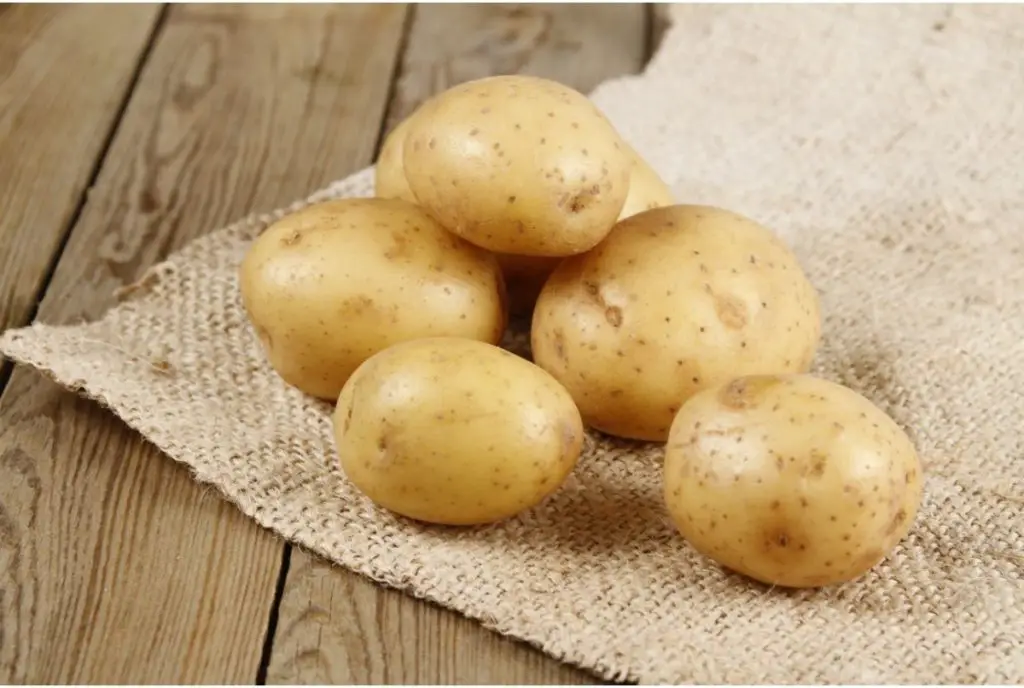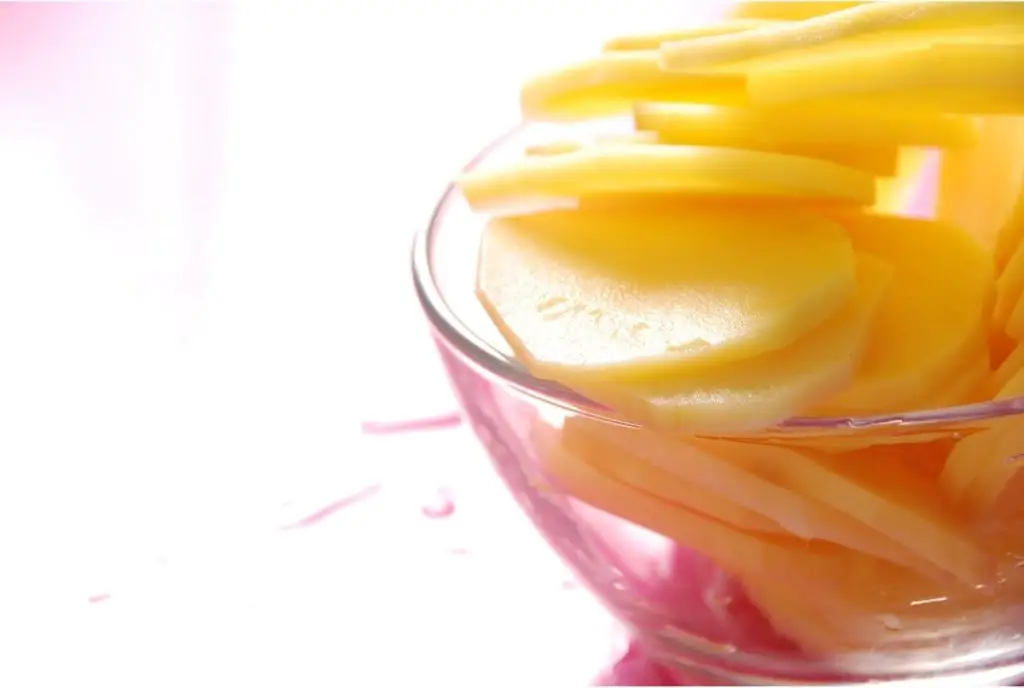Potatoes often come in such huge sacks, that it’s hard not to end up with too many. What is the best way to preserve them? Well, it’s probably freezing. But freezing completely raw potatoes is not a good idea (see also Freezing Boiled Potatoes). Rather, you will need to blanch them first. Here is everything you need to know in order to enjoy perfect potatoes (see also How To Freeze Potato Salad) for the freezer.

Freezing Potatoes Step By Step
Before we set out on the potato freezing journey, we should say a word or two about choosing the right potatoes for freezing. If you are freezing your own potatoes, don’t do it straight after the harvest. It’s best to let the potatoes age for another couple of weeks and then proceed to freeze them. If you’re freezing potatoes bought in a store, it’s always better to freeze them sooner rather than later.
#1 Prepare The Potatoes
As mentioned above, you will need to blanch your potatoes first. So, you can’t just throw the taters in the freezer. To prepare for blanching, first clean the potatoes thoroughly. If you’d like to use your potatoes with skin on, you can freeze them that way as well. In that case, you will simply blanch whole, unpeeled potatoes. Smaller potatoes work better for this method than larger ones.
If you don’t want to use your potatoes with skin, it’s best to peel them before blanching. If you are using very large potatoes, cut them into halves or quarters at this point for best results. Smaller potatoes can be blanched whole. Depending on how you want your potatoes, you can cut them before or after blanching. If you’ll be freezing your taters in large wedges, then it’s better to cut the potatoes before boiling them. On the other hand, if you want diced potatoes, chopping after the blanching is easier.
#2 Blanching
To blanch your potatoes, you’ll need a large pot of boiling water. While the pot is heating up, prepare another large bowl of ice water. Keep it close to the stove – you will need to drop the potato pieces in there fast to stop the cooking process.
When you are ready, drop the potatoes in the boiling water. They’ll need to cook for only three to five minutes – you don’t want to cook them through. Smaller pieces will be ready faster than larger pieces. The potatoes should still feel firm, with slightly softened edges. If you have a blanching basket, use it. It will make the process easier. Otherwise, you can make do with a colander or a slotted spoon.
This you will use in the next step, to transfer the potatoes from the boiling water into the ice bath. Do this step as quickly as possible. The cold water will stop the cooking process and keep the texture of the potatoes firm. Again, the potatoes will not be technically raw, but we want to keep them as close to that as possible.
#3 Drying
Your potatoes will need to stay in the ice water only for a couple of minutes. Once they feel cold to the touch, you’ll want to drain out the water. Then, you’ll want to dry the potato pieces as much as possible. Spread them out on a kitchen towel or paper towel to dry them out a bit. Too much moisture can damage the texture of the potatoes in the freezer.
#4 Pack, Label, and Freeze
Once your potatoes are dry, you are ready to freeze them. You can use any air-tight container for this purpose. Another option is using a freezer-bag. This way, you can squeeze out the extra air to keep the taters optimally protected. If you have a vacuum sealer you can go ahead and use it to keep your potatoes lasting longer. All that’s left to do now is label the container with the current date and place the potatoes in the freezer.

How to Defrost Potatoes
The right way to defrost potatoes depends on the way you plan to use them. In general, if you plan to cook your potatoes, it’s best to use them straight from the freezer. Blanched potatoes can be used with any cooking method, just like raw. Boil them, roast them, fry them. You can do all of this immediately with potatoes taken out of the freezer. If you need your potatoes defrosted, you can try placing the container in a large pot of cold water (or put it under the running water from your tap). This will help them defrost more quickly. You can also use the defrost setting on your microwave. However, be aware, potatoes can turn a bit mushy if defrosted in the microwave. If you are making slow-roasted potatoes, this won’t matter, for example, but if you need your potatoes to stay firm be aware of this problem.
